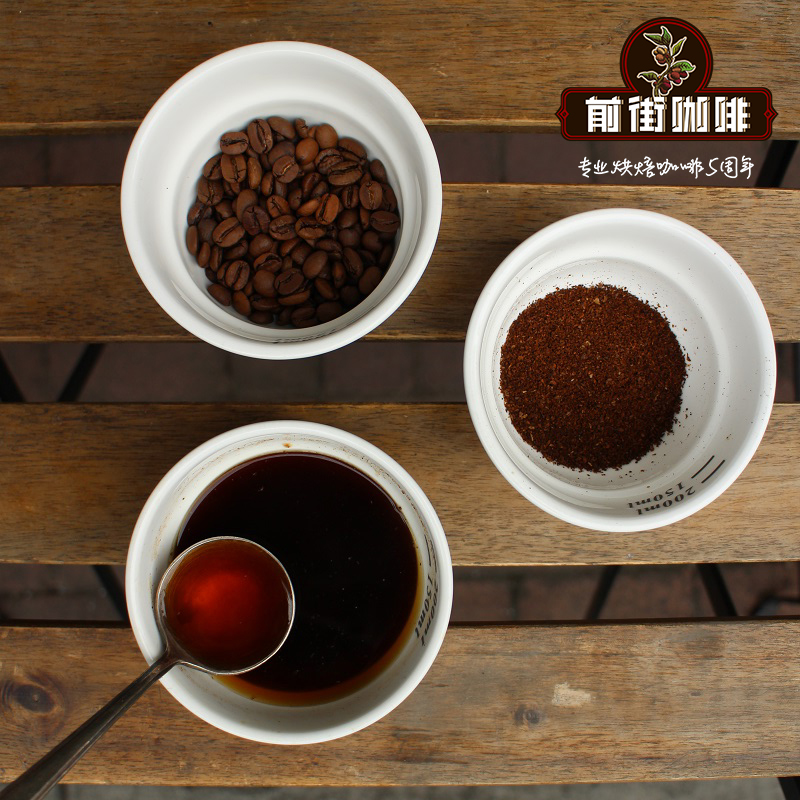Honduras-C.O.E Champion Manor Santa Mata (Finca Santa)

Professional coffee knowledge exchange more coffee bean information please follow the coffee workshop (Wechat official account cafe_style)
Honduras has always been among the top few in the boutique coffee market, but Honduras has the advantages of natural environment, excellent soil quality, altitude, and climatic conditions. Nearby Guatemala, El Salvador and Nicaragua also have advanced coffee production. What Honduras lacks is infrastructure and its reputation in the consumer market is not good enough. Hongguo is better known for commercial beans than high-quality beans. No matter how good the quality is, there is no way to sell them at a good price. Many beans from Koban and Santa Barbara are mixed with fish eyes as Guardia beans. Moreover, they are sold at the price of Guardia beans, and for a long time they are not aware of their own potential for the cultivation of high-quality coffee beans. The main problem is that coffee cherries are only slightly processed. It is sold to the processing plant when it is still wet, which often causes coffee cherries to become moldy and damaged before they are officially dried until the moisture content is only 12%. Through drying, such cherries become defective beans with improper drying. Since there is no relative price feedback for good quality, coffee farmers, processors, and exporters have no incentive or incentive to increase costs to develop the potential for coffee growth. as a result, the fate of coffee beans in Honduras has become recognized as a mild mixed bean. rather than beans from a single origin or unique farm, this is a vicious circle.
But now it's different, with the help of USAID and Fintrac and several cooperatives like La Central, they try their best to promote and educate Macro bean farmers to produce good coffee, and then properly handle it to maximize the flavor of the final coffee. In addition, the Fair Trade Association (Fair Trade) funded the construction of processing equipment and increased the expertise of coffee farmers to make the coffee in Honduras gradually come out of the trough. It has become a burgeoning Central American coffee in the past year or two.
Honduras is as diverse as other producing countries, and I can't cover it all in one way. The largest producing area is Santa Barbara Santa Barbara, and there are other producing areas such as Copan Koban, Ocotepeque Ocotepec, Lempira Lompilla, La Paz Baz, and El Paraiso Periso in the south, which are planted at elevations of 1500 to 2000 meters. Mainly grow extremely high sea beans (SHG) generally speaking, the Honduras coffee we have recently tested has low acidity, high sweetness and obvious caramel flavor, which is an excellent choice for espresso formula beans.
In 2011, Direct Coffee was introduced to Finca Santa Marta Santa Mata Manor in Ocotepeque Ocotepec, the winner of the 2006 C.O.E Coffee Competition and the top coffee farm in Honduras.
Important Notice :
前街咖啡 FrontStreet Coffee has moved to new addredd:
FrontStreet Coffee Address: 315,Donghua East Road,GuangZhou
Tel:020 38364473
- Prev

What kind of sun-treated coffee do you have in Costa Rica? Manor Fire Phoenix Fine Coffee
Professional coffee knowledge exchange more coffee bean information Please follow the coffee workshop (Wechat official account cafe_style) Coffee beans produced in the high latitudes of Costa Rica are famous in the world, full-bodied, mild in taste, but extremely sour, and the coffee beans here are carefully processed, which is why there is high quality coffee. Costa Rica is located in St. St., the capital of Tarasu.
- Next

General Manor El General of Guatemala introduces how to drink Guatemalan coffee.
For more information on coffee beans, please pay attention to the coffee workshop (Wechat official account cafe_style) located in the Acatenango valley of the Akatnam fruit producing region in the south of Guatemala. The Finca El General estate is nourished by volcanic soil, the coffee beans have a mellow aroma and bright taste. The evaluation of Espresso is sweet fruit tower tone.
Related
- Does Rose Summer choose Blue, Green or Red? Detailed explanation of Rose Summer Coffee plots and Classification in Panamanian Jade Manor
- What is the difference between the origin, producing area, processing plant, cooperative and manor of coffee beans?
- How fine does the espresso powder fit? how to grind the espresso?
- Sca coffee roasting degree color card coffee roasting degree 8 roasting color values what do you mean?
- The practice of lattes: how to make lattes at home
- Introduction to Indonesian Fine Coffee beans-- Java Coffee producing area of Indonesian Arabica Coffee
- How much will the flavor of light and medium roasted rose summer be expressed? What baking level is rose summer suitable for?
- Introduction to the characteristics of washing, sun-drying or wet-planing coffee commonly used in Mantenin, Indonesia
- Price characteristics of Arabica Coffee Bean Starbucks introduction to Manning Coffee Bean Taste producing area Variety Manor
- What is the authentic Yega flavor? What are the flavor characteristics of the really excellent Yejasuffi coffee beans?

